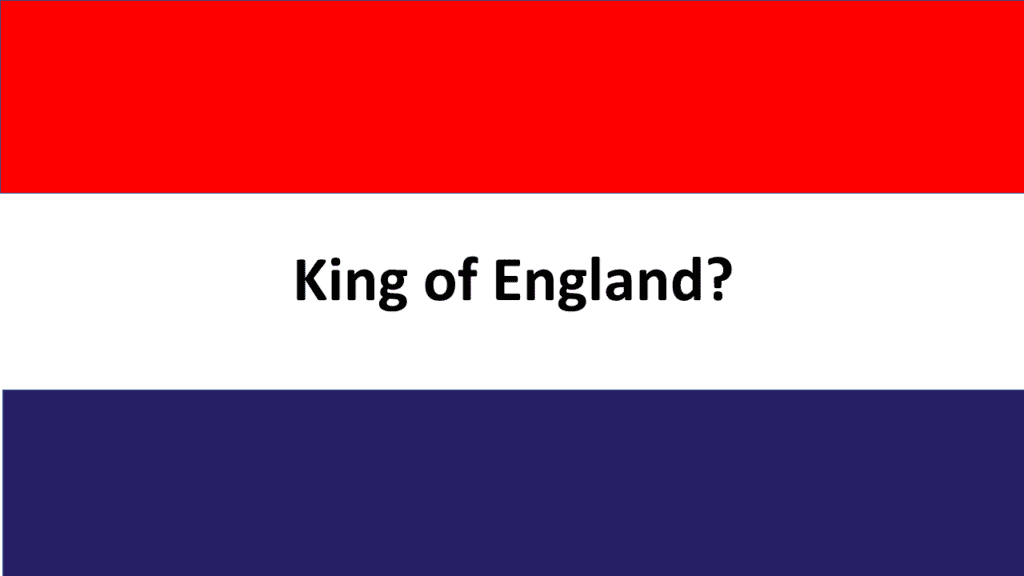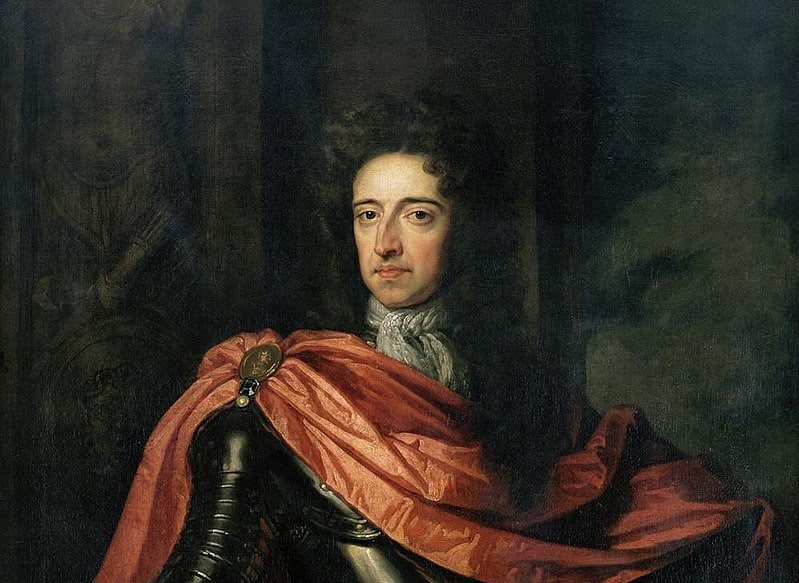William of Orange is the most famous name in Dutch history, and the orange shirts of Dutch national teams still refer to his family name. William of Orange is the quintessential Dutchman, so to speak, making it hard to imagine that this Dutchman would become King of England. However, that is precisely what happened at the end of the 17th century.
William III, Prince of Orange and Stadtholder of Holland, became King William III of England, Scotland, and Ireland in 1689 and ruled until he died in 1702. He was succeeded by his sister-in-law, Queen Anne, because he was childless.
Even though it looks like a very peculiar twist in history, it shows the pragmatism of the Dutch in those days. The Anglo-Dutch wars in the second part of the 17th century were based on mercantile interests. The English and the Dutch suddenly realized they needed to team up against a mighty common enemy, France. So, mercantilist interests were put aside for a brief period in history.
William III of Orange appeared to be the ideal figure to align the Dutch and the English at that critical moment in their history. Read on to learn how he became King of England.

Which William Of Orange Became King of England?
William of Orange is a common name in the Dutch Royal House, the House of Orange-Nassau, and many Williams have played a role in Dutch history. This dominant presence of members of the House of Orange in Dutch history is why orange is the national color of the Netherlands, and Dutch national teams still wear orange today.
The first William of Orange was the founding father of the Republic of the 7 United Netherlands, as The Netherlands was called in those early days of its existence. Holland was an independent county and one of the seven Netherlands that formed this Republic. I have also written another article on this website to explain why The Netherlands is also called Holland.
The most important role that William II of Orange played in Dutch history during his brief life was that he conceived William III of Orange, born two weeks after he died in 1650.
William III of Orange is the William of Orange who was stadtholder of the Dutch Republic from 1672-1702 and King of England from 1689-1702.
| Period | Which William? | William’s Title |
|---|---|---|
| 1533-1584 | William I | Stadtholder of the Dutch Republic |
| 1626-1650 | William II | Stadtholder of the Dutch Republic |
| 1650-1702 | William III | Stadtholder – King |
| 1711-1751 | William IV | Stadtholder of the Dutch Republic |
| 1748-1806 | William V | Stadtholder of the Dutch Republic |
| 1772-1843 | William I | King of The Netherlands |
| 1792-1849 | William II | King of The Netherlands |
| 1817-1890 | William III | King of The Netherlands |
| 1967-present | William-Alexander | King of The Netherlands |
What may be a bit confusing is that after the foundation of the Kingdom of The Netherlands in 1815, the name William I of Orange was again used, but for the king and not for a stadtholder. There walittlech imagination when naming baby boys in the House of Orange because William II and William III were the names of his successors as King of The Netherlands.

How Did William III Of Orange Become King Of England?
William III of Orange was born in 1650, two weeks after his father, William II of Orange, died. Therefore, he was primarily raised by his mother and several Dutch teachers and protestant preachers. The most important lessot young William of Orange learned from them was that he was born into royalty and entitled to rule.
However, during his youth, there was an ongoing internal political struggle in The Netherlands between Dutchmen supporting the Orange dynasty and others favoring a republican state. England and France simultaneously attacked the Dutch Republicacked in 1672, and William was appointed as stadtholder of the Dutch Republic and captain-general of the Dutch army.
The Anglo-Dutch war ended in 1674, and William married Mary, daughter of the Duke of York, who later would beKing king James II of England. The marriage with Mary was a shrewd political move of William III because it would possibly entitle him to the English throre.
His chance came when the catholic James II married an Italian Catholic Princess and became the father of a baby boy in 1688. English protestants practically begged the Protestants William III of Orange to invade and save England from Catholicism. William was ambitious enough to listen to him, invaded England, and King James II fled to France within a couple of weeks. That allowed the Dutchman William of Orange to be crowned King of England.
In early 1689, James II returned fros exile in France and landed with an army in Ireland. William III of Orange defeated him atBattleattle of the Boyne and left his footsteps in Irish history. The orange in the Irish flag still represents the protestants, who were supporters of William of Orange. That is different from the meaning of orange in the Netherlands, where orange symbolizes national unity, and the Dutch signify national pride by wearing orange.
And suddenly, a Dutchman occupied the English throne, a remarkable irony after the English denounced the Dutch with outright derogatory expressions about the Dutch during the previous century. You can read more about the English attitude toward the Dutch in another article on this website (why are the Dutch called the Dutch?).
Are The Dutch And English Royal Houses Still Related?
The Dutch Royal Family occupied front-row seats during the funeral of Queen Elisabeth II in 2022, which makes you wonder if the Dutch and English Royal Houses are still related. However, William III of Orange died childlessly, so family relations between the two royal houses must be found elsewhere.
- The Dutch and English Royal Houses are distant relatives, and the family relationship originates from two children of the English King George II (1683-1760).
- His daughter Anne married Prince William IV of Orange-Nassau in 1721, and their son became Prince William V of Orange, an ancestor of our present Dutch King William-Alexander.
- A son of King George II and brother of Anne, Frederik, is a distant ancestor of the present English King Charles.
Those family relations are so distant that it seems unlikely that there was another reason that the Dutch royals were sitting in the front row seats. It is more likely that some personal friendships between the two royal houses exist that we, as mere mortals, are not aware of.

